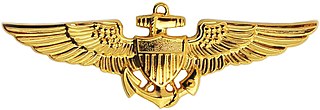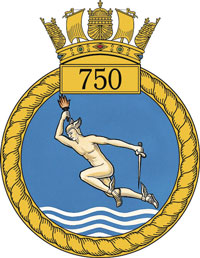
The Sikorsky SH-60/MH-60 Seahawk is a twin turboshaft engine, multi-mission United States Navy helicopter based on the United States Army UH-60 Black Hawk and a member of the Sikorsky S-70 family. The most significant modifications are the folding main rotor and a hinged tail to reduce its footprint aboard ships.

The Sikorsky CH-53E Super Stallion is a heavy-lift helicopter operated by the United States military. As the Sikorsky S-80, it was developed from the CH-53 Sea Stallion, mainly by adding a third engine, adding a seventh blade to the main rotor, and canting the tail rotor 20°. It was built by Sikorsky Aircraft for the United States Marine Corps. The less common MH-53E Sea Dragon fills the United States Navy's need for long-range minesweeping or airborne mine countermeasures missions, and perform heavy-lift duties for the Navy. Under development is the Sikorsky CH-53K King Stallion, which has new engines, new composite rotor blades, and a wider aircraft cabin; this is to replace the CH-53E.
A naval flight officer (NFO) is a commissioned officer in the United States Navy or United States Marine Corps who specializes in airborne weapons and sensor systems. NFOs are not pilots, but they may perform many "co-pilot" functions, depending on the type of aircraft. Until 1966, their duties were performed by both commissioned officer and senior enlisted naval aviation observers (NAO).

The Naval Aviation Warfighting Development Center was formerly known as the Naval Strike and Air Warfare Center at Naval Air Station Fallon located in the city of Fallon in western Nevada. It is the center of excellence for naval aviation training and tactics development. NAWDC provides service to aircrews, squadrons and air wings throughout the United States Navy through flight training, academic instructional classes, and direct operational and intelligence support. The name was changed from NSAWC to NAWDC to align with the naming convention of the Navy's other Warfare Development Centers (including Naval Surface and Mine Warfare Development Center SMWDC and the Undersea Warfare Development Center UWDC

A naval aviator is a commissioned officer or warrant officer qualified as a pilot in the United States Navy, United States Marine Corps or United States Coast Guard.

A Weapon Systems Officer is an air flight officer directly involved in all air operations and weapon systems of a military aircraft.

Marine Fighter Attack Training Squadron 101 (VMFAT-101) is a United States Marine Corps F/A-18 Hornet training squadron. The squadron is based at Marine Corps Air Station Miramar, California and falls under the command of Marine Aircraft Group 11 (MAG-11) and the 3rd Marine Aircraft Wing.

Marine Light Attack Helicopter Training Squadron 303 (HMLAT-303), is a United States Marine Corps helicopter training squadron stationed at Marine Corps Base Camp Pendleton, California. Known as the "Atlas", HMLAT-303 trains newly commissioned Naval Aviators, conversion pilots, and refresher pilots to fly the Bell UH-1Y Venom and Bell AH-1Z Viper. HMLAT-303 is also responsible for training Bell UH-1Y Venom crew chiefs. It is part of Marine Aircraft Group 39 (MAG-39) and the 3rd Marine Aircraft Wing.

Training Squadron 86 (VT-86), also known as the "Sabrehawks," is a United States Navy advanced training squadron based at Naval Air Station Pensacola, Florida. They are a training squadron flying the T-45C Goshawk. Their tailcode is F and their radio callsign is ROKT.

The Royal Navy Observer School grew out of HM Naval Seaplane Training School at RNAS Lee-on-Solent as a result of a series of changes of identity and parent unit. From 1918 until 1939 the Royal Air Force was responsible for naval aviation, including training and provision of aircrew to the Royal Navy. With the return of naval aviation to the Royal Navy on 24 May 1939, the Observer School was established as 750 Naval Air Squadron of the Fleet Air Arm. During World War II the squadron moved to Trinidad to continue training aircrew. It was temporarily disbanded in October 1945. The squadron reformed in 1952 and is currently based at RNAS Culdrose, where it trains approximately 30 Royal Navy observers every year.

Helicopter Mine Countermeasures Squadron 15 (HM-15) is a United States Navy helicopter squadron established in 1987 and based at Naval Station Norfolk. Nicknamed the "Blackhawks" and flying the MH-53E Sea Dragon, it is staffed by both active duty and reserve personnel. It is the sister squadron to HM-14, the "Vanguard", based a half-mile away at NS Norfolk.

Helicopter Maritime Strike Squadron 41 (HSM-41) Seahawks is a United States Navy helicopter squadron based at NAS North Island, San Diego, California.

Helicopter Sea Combat Squadron THREE , also known as the "Merlins", is a United States Navy multi-role combat helicopter squadron based at Naval Air Station North Island in San Diego, California which operates the Sikorsky MH-60S Knighthawk helicopter to train aircrew and support fleet development on the MH-60S for the Commander Helicopter Sea Combat Wing, U.S. Pacific Fleet. The squadron was established on 1 September 1967 at Naval Air Station Imperial Beach with the Boeing Vertol CH-46 Sea Knight to provide vertical replenishment (VERTREP) services on the West Coast, and was redesignated HSC-3 on 1 April 2005.

Helicopter Mine Countermeasures Squadron 14 (HM-14) is a United States Navy helicopter squadron established in 1978 based at Naval Station Norfolk, Virginia. Nicknamed the Vanguard and flying the MH-53E Sea Dragon, it comprises both active duty and reserve personnel. It is the sister squadron to HM-15, the Blackhawks, based at NS Norfolk.

A squadron in air force, army aviation, or naval aviation is a unit comprising a number of military aircraft and their aircrews, usually of the same type, typically with 12 to 24 aircraft, sometimes divided into three or four flights, depending on aircraft type and air force. Land based squadrons equipped with heavier type aircraft such as long-range bombers, cargo aircraft, or air refueling tankers have around 12 aircraft as a typical authorization, while most land-based fighter equipped units have an authorized number of 18 to 24 aircraft.

Air Test and Evaluation Squadron TWO ONE (HX-21) "Blackjack" is a U.S. Navy aircraft squadron located at Naval Air Station Patuxent River, Maryland on the Chesapeake Bay. As part of the Naval Air Warfare Center Aircraft Division (NAWC-AD), Naval Test Wing Atlantic (NTWL), HX-21 is responsible for the Developmental Test and Evaluation of Navy and Marine Corps rotary-wing/tilt-rotor aircraft, airborne systems, and Unmanned Aircraft Systems (UAS) in support of acquisition decisions that improve the Navy and Marine Corps' war fighting capability. Additionally, HX-21 tests and evaluates new mission systems to integrate legacy aircraft into the constantly evolving fighting force.

Helicopter Maritime Strike Four Six (HSM-46), the "Grandmasters", are a United States Navy helicopter squadron based at Naval Station Mayport, Mayport, Florida. HSM-46 deploys aboard cruisers, destroyers, and aircraft carriers in independent operations or in support of strike groups. The squadron was established on 7 April 1988 as Helicopter Antisubmarine Squadron (Light) Forty Six (HSL-46)

Helicopter Sea Combat Squadron 2 , also known as the "Fleet Angels", is a helicopter squadron of the United States Navy based at Naval Station Norfolk operating the Sikorsky MH-60S Seahawk. The Fleet Angels are a Fleet Replacement Squadron providing trained MH-60S crew to units on the East Coast.

Helicopter Maritime Strike Weapons School Pacific (HSMWSP) is a United States Navy helicopter training squadron based at NAS North Island, Coronado, California. HSMWSP provides advanced air combat weapons and tactics training and standardization for ten Pacific Fleet HSM squadrons composed of MH-60R and MQ-8B aircraft.


















